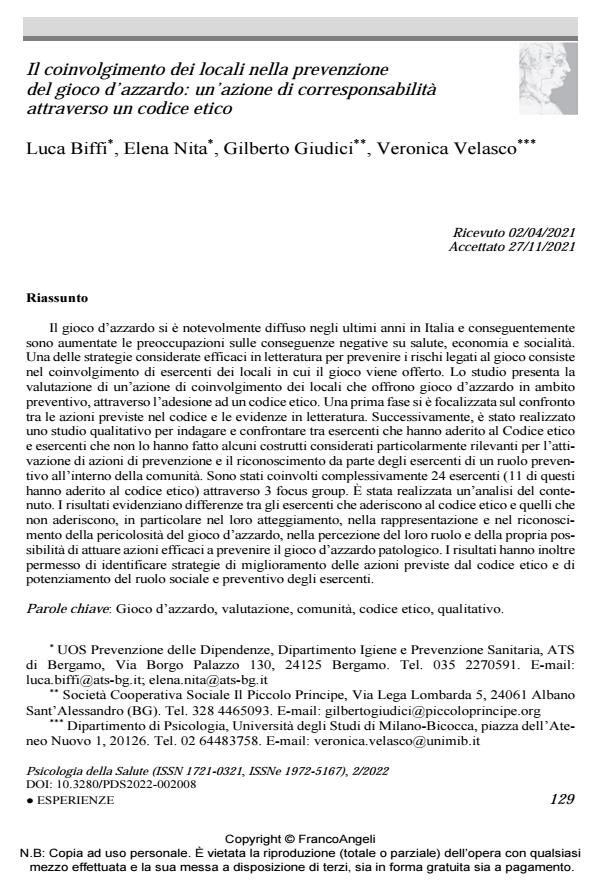Involving gambling venues in gambling prevention pratices: a co-responsibility action through a Code of Ethics
Journal title PSICOLOGIA DELLA SALUTE
Author/s Luca Biffi, Elena Nita, Gilberto Giudici, Veronica Velasco
Publishing Year 2022 Issue 2022/2
Language Italian Pages 16 P. 129-144 File size 256 KB
DOI 10.3280/PDS2022-002008
DOI is like a bar code for intellectual property: to have more infomation
click here
Below, you can see the article first page
If you want to buy this article in PDF format, you can do it, following the instructions to buy download credits

FrancoAngeli is member of Publishers International Linking Association, Inc (PILA), a not-for-profit association which run the CrossRef service enabling links to and from online scholarly content.
In recent years, gambling has spread in Italy and concerns about its negative consequences on health, economy, and sociality have increased. One of the strategies considered effective in the literature to prevent gambling risks is to involve the staff of gambling venues. The study presents the evaluation of an intervention to involve gambling venues in the preventive field, joining a Code of Ethics. A first phase focused on comparing the actions foreseen in the Code and the evidence in the literature. Later, a qualitative study was realized to investigate and compare, between venues’ managers who joined the Code of Ethics and those who didn’t, some constructs particularly relevant for prevention action implementation and the recognition of a preventive role within the community. A total of 24 staff members were involved (11 of these joined the Code of Ethics) through 3 focus groups. A content analysis was carried out and a qualitative research method was used. The results highlight differences between venues’ mangers who joined the Code of Ethics and those who do not, in particular in their attitude, in the representation and recognition of the risks of gambling, in the perception of their role, and their ability to implement effective actions to prevent pathological gambling. The results also made it possible to identify strategies to improve the actions foreseen by the Code and strengthening the social and preventive role of the managers.
Keywords: Gambling, Evaluation, Community, Code of Ethics, Qualitative.
Luca Biffi, Elena Nita, Gilberto Giudici, Veronica Velasco, Il coinvolgimento dei locali nella prevenzione del gioco d’azzardo: un’azione di corresponsabilità attraverso un codice etico in "PSICOLOGIA DELLA SALUTE" 2/2022, pp 129-144, DOI: 10.3280/PDS2022-002008